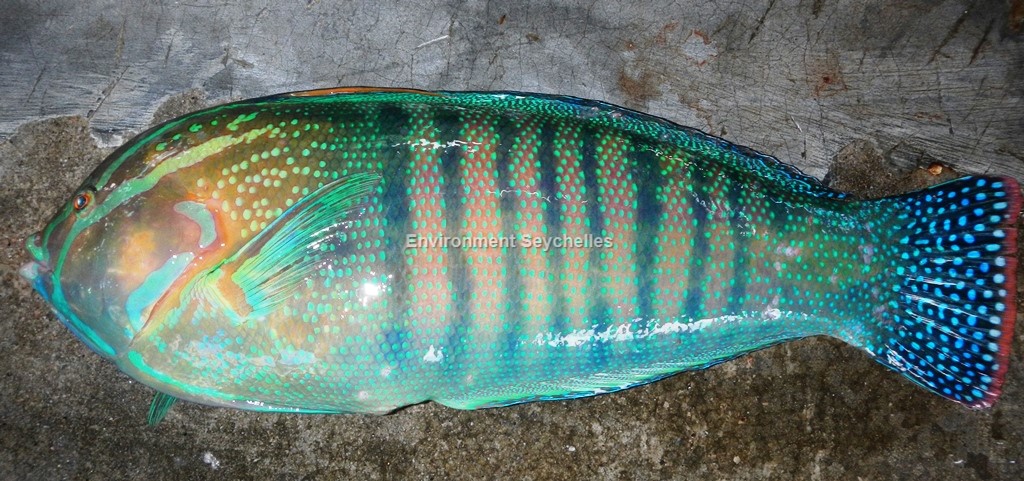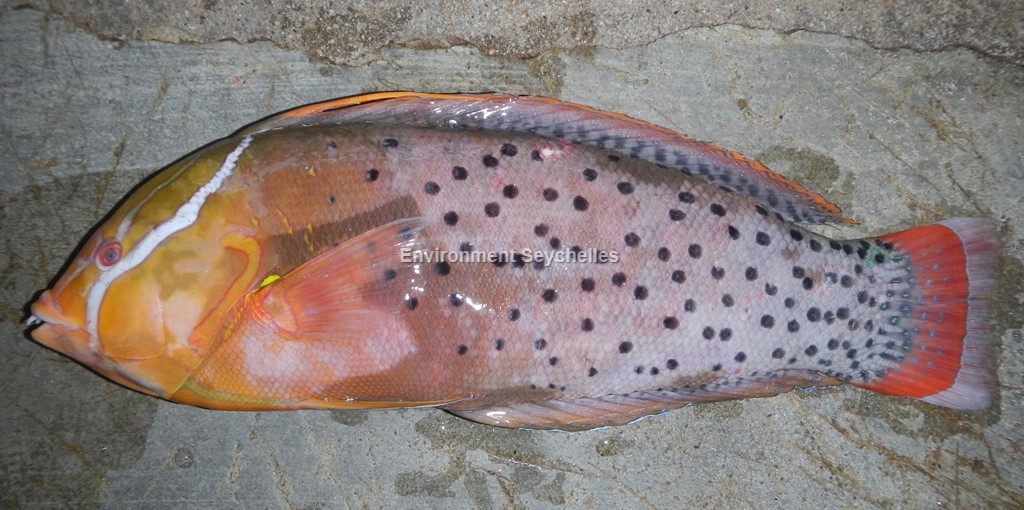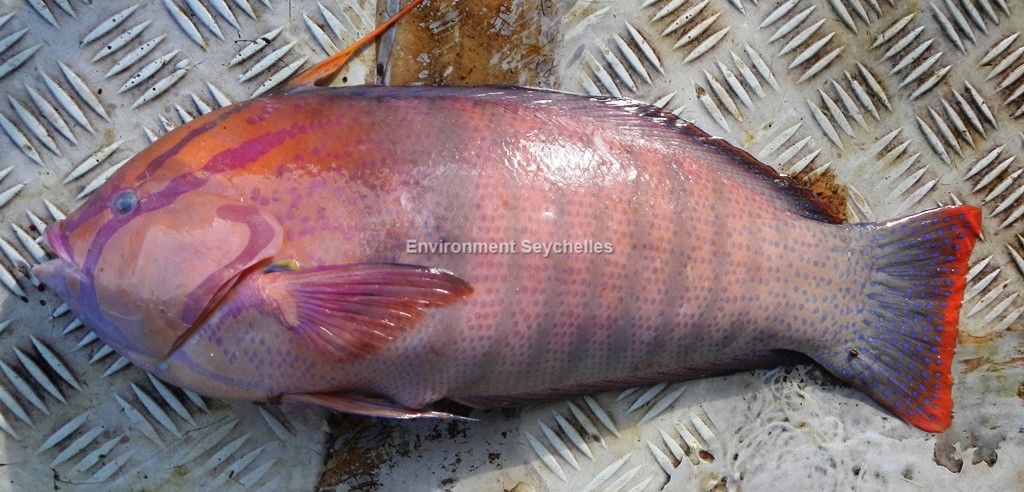Description:
Dorsal spines: 9; Dorsal rays: 12; Anal spines: 3; Anal rays: 12.
Moderately slender-bodied wrasse. Dorsal profile of head slightly convex. 2 prominent canines at anterior of each jaw, subsequent progressively smaller. 1 or 2 separate
canines present on each side at rear of upper jaw. Cheek, opercle and lower jaw without scales. Dorsal fin continuous, first 2 spines in large individuals considerably
longer with trailing filament. Pelvic fins filamentous in large individuals. Caudal fin truncate to slightly rounded.
Colour.
Initial Phase. Body base colour varies from olive grey to lavender with numerous relatively evenly spaced black spots most as large as eye, becoming smaller on the caudal
peduncle and also on the proximal portions of the dorsal and anal fins. Black spots become ocelli on caudal fin with bright blue centres. Anterior portion of body
progressively brownish to orangish on head. Striking electric blue or green stripe runs from anterior base of dorsal fin across face below eye and then down behind mouth
to edge of opercle. A second narrow line originates from same point running to top of eye and then anterior to eye, may bifurcate. Distinctive bright yellow green patch
at upper edge of pectoral fin axis. Bright orange trailing filament from first two spines of dorsal fin. Caudal fin red with black-edged blue spots and broad lavender margin.
Terminal Phase: Body base colour can vary from orange through reddish to lavender. They share the distinctive stripes on the head as described for the Initial phase
(although colour may vary, see photos) and the shading to orange colour anteriorly. Exhibit 8 to 10 characteristic dark bars on sides of large individuals. Flanks speckled
with black to brilliant blue or green spots. Trailing filament from first 2 spines of dorsal fin bright orange. Distinctive bright yellow-green patch at top of pectoral
fin axis. Caudal fin dark with small, dark-edged, blue-green spots, posterior margin light orange-red.
These descriptions do not even begin to do justice to the rich colours and pattern of these stunning and very distinctive fish… see photos.
Juveniles orange, head and lower part of body dark brown; 3 large, vertically elongate, broadly black-edged, white spots on dorsal part of body.
Size:
Maturity: Lm unknown. Range unknown. Max Length: 60 cm TL.
Habitat and Ecology:
Inhabits weed and rock or coral areas (depth 2-30m). Juveniles are common in shallow rocky tide pools. Adults are solitary in habit. Feeds mostly on hard-shelled prey,
including crustacea, molluscs and sea urchins. Oviparous, with distinct pairing during breeding.
Fishery Status:
This species is not protected or subject to fishery regulations. It is caught in the hand line fishery, but is an uncommon component of the catch.
Notes:
References:
Craig, M.T. (2010). Coris formosa. The IUCN Red List of Threatened Species 2010: https://dx.doi.org/10.2305/IUCN.UK.2010-4.RLTS.T187664A8594629.en. (05/03/20).
Froese, R. & D. Pauly. (Eds.) (2018). FishBase. https://www.fishbase.se/summary/Coris-formosa (04/06/19).
Randall, J.E. (1986). Labridae. p. 683-706. In M.M. Smith and P.C. Heemstra (eds.) Smiths' sea fishes. Springer-Verlag, Berlin.
Citation:
Nevill, J.E.G. (2019). Coris formosa, Queen coris wrasse. Seychelles Seatizens. www.seatizens.sc. https://seatizens.sc/species/coris-formosa-bennett-1830/ (edited 10/07/22).




Great read! Your perspective on this topic is refreshing. For additional information, I recommend visiting: DISCOVER MORE. What do others think?